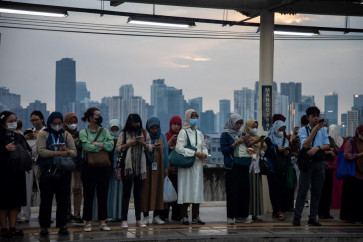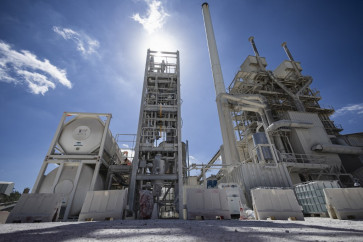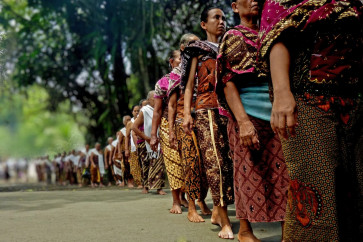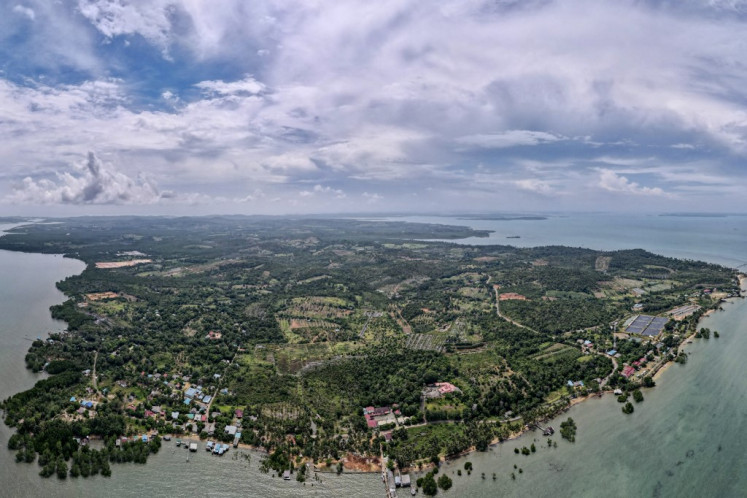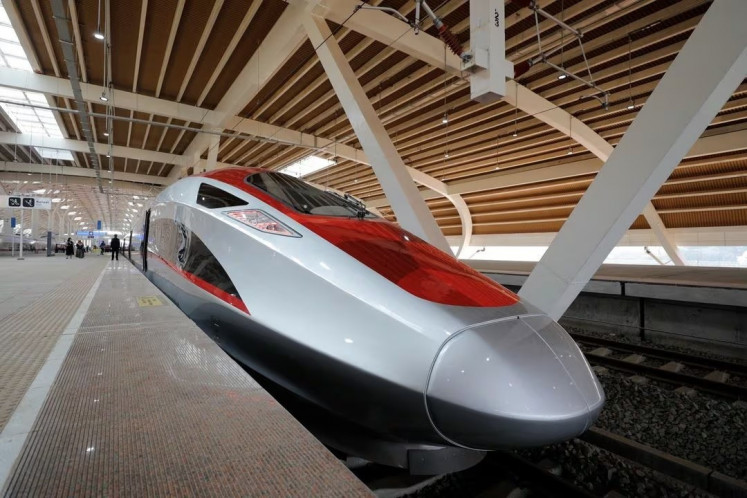Popular Reads
Top Results
Can't find what you're looking for?
View all search resultsPopular Reads
Top Results
Can't find what you're looking for?
View all search resultsThe value of ASEAN integration and the WTO regime
ASEAN integration is beyond conventional trade integration
Change text size
Gift Premium Articles
to Anyone
A
SEAN integration is beyond conventional trade integration. It is true that the ASEAN Free Trade Area or AFTA is in the first category of conventional economic integration, which consists of internal tariff elimination. However, ASEAN does not aim to be a 'customs union'. The ASEAN Economic Community (AEC) is intended to act as a production base with free movement of goods, services, skilled labor and capital.
As a result of ASEAN's economic integration, in trade in goods, 99 percent of tariff lines were eliminated in the ASEAN-6 countries: Brunei, Indonesia, Malaysia, the Philippines, Singapore and Thailand in 2010; and will be eliminated in Cambodia, Laos, Myanmar and Vietnam by 2018. In trade in services, among the ASEAN-10 countries, the Hoekman index averages 0.44 across services sectors (note: 1 means fully open and 0 means closed, so the higher the number close to 1, means more openness). In investment, ASEAN established an ASEAN Comprehensive Investment Agreement or ACIA in 2009.
This establishes the four pillars of liberalization, protection, facilitation and promotion. It covers manufacturing, agriculture, mining, fisheries, forestry, and services with exceptions listed in a single negative list. On top of that, ASEAN has moved forward the agenda of integration by among other things, developing the national single window, improving customs clearance, establishing ASEAN harmonized tariff nomenclature at the HS-8 digit level, constructing a repository of non-tariff measures, and other trade facilitation measures.
ASEAN has also actively advanced integration in East Asia. ASEAN is not the 'giant', but apparently the 'darling' in East Asian economic integration.
The data show that ASEAN's share of the total world trade in goods and services has been relatively small and far below its main trading partners, but ASEAN has successfully advanced economic integration in East Asia.
ASEAN's share of total world trade in goods was only 6.4 percent in 2000 and increased merely to 6.8 percent in 2012, while the share of ASEAN's six main trading partners, which are also its free trade agreement (FTA) partners, (China, Japan, Korea, India, Australia and New Zealand) of total world trade in goods increased from 16 to 24 percent over the same period. In terms of services, the total trade in services of ASEAN and its six FTA partners increased more than three times in the last decade. Each increased at annual growth rates of 11 and 12 percent, respectively.
However, ASEAN has successfully advanced integration in East Asia, which is due to two main reasons. First, politically, ASEAN strategically formed the ASEAN+1 FTAs with its six main trading partners, and now ASEAN is actively forming an ASEAN+6, known as the Regional Comprehensive Economic Partnership. Second, economically,
ASEAN consists of growing economies, particularly Indonesia, Malaysia, Thailand and Vietnam, as they benefit from the so-called 3Ds ' durable macro economy, domestic consumption and demographic dividend (Ing, 2012). Indeed, Indonesia and Thailand are among the world's seven gainers in the share of manufacturing in the last three decades, together with China, Korea, Turkey, India and Poland (Baldwin, 2013).
So, what are the values of ASEAN integration that can be shared with other World Trade Organization (WTO) members? The answer is embedded in the WTO itself.
First, W stands for the way to approach an agreement: reinstate a 'negotiation' approach by endorsing more 'disciplined commitments'. For sector-based agreements, a certain number of countries may have their interests and common policies, and the WTO may consider allowing plurilateral agreements similar to what we have in information technology.
The point is that the WTO may consider giving its consent to members designing a plurilateral agreement for countries with the same interests in certain sectors, but it should apply its consent in a non-discriminatory fashion (or multilateral agreement type A), and the approach would include more disciplined commitments instead of a negotiation approach.
For cross-sector issues, something that is related to procedures, such as customs clearance, advance ruling procedures, trading across border procedures and the like, the WTO could endorse a multilateral agreement.
Second, T stands for trade facilitation. One of the success stories of ASEAN integration is that it goes beyond tariff elimination. One study by the Economic Research Institute for ASEAN and East Asia (ERIA) claims that trade facilitation plays a crucial role in reducing costs and provides greater benefits to trade than even tariff elimination.
ASEAN realizes that the tariff rate is only one part of the whole complex trade system. ASEAN is advancing its integration by moving forward the agenda, including improvement in trade facilitation.
Last, O stands for orientation: ASEAN is focused on the development of production networks by improving agreements on customs and logistics to reduce service-link costs. Asia accounts for more than 50 percent of the world's automobile production, 62 percent of liquid display screens, 86 percent of smartphones and 100 percent of digital cameras (Hiratsuka, 2013).
Much of this production is based in production networks. Keep in mind, imports are largely used as inputs for exports, and that services are also inputs for exports.
Many countries are engaged directly and indirectly in producing final products. A multilateral agreement is a good avenue leading to reducing the service-link cost by endorsing agreements related to customs, logistics and improved transparency of laws and administrative rulings.
The writer is an economist at the Economic Research Institute for ASEAN and East Asia (ERIA) and a lecturer at the University of Indonesia. She was one of speakers at the WTO Symposium in Bali.


